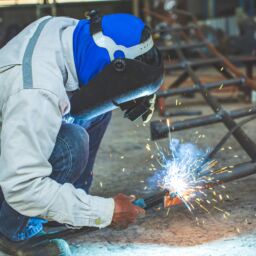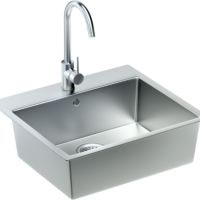
Welding is a common industrial process used to join metals by melting the edges and fusing them together. While welding is essential for various industries, it also produces hazardous fumes and particles that can be harmful to workers’ health if not properly controlled.
A welding fume extractor is a crucial piece of equipment designed to remove these harmful contaminants from the air, ensuring a safe and healthy work environment.
However, selecting the right welding fume extractor for your specific needs requires careful consideration of several factors. This guide aims to help you make an informed decision by outlining the key considerations and steps to take when choosing a welding fume extractor.
Welding fume extractor for my needs
Before purchasing a welding fume extractor, you must understand your specific requirements and the type of welding you perform. Different welding processes, such as MIG, TIG, and stick welding, generate varying levels and types of fumes. Consider factors such as the types of metals being welded, the volume of welding being performed, and the size of the workspace. By understanding your application, you can determine the necessary extraction capacity and filtration efficiency of the extractor for more related information click here.
Types of Fume Extractors:
There are several types of welding fume extractors available, each with its own features and benefits. The main types include:
Portable Extractors:
These are ideal for smaller workspaces and occasional welding. They are easy to move around and offer flexibility.
Centralized Extractors:
Suitable for larger work areas with multiple welding stations. They provide a centralized system for capturing fumes from multiple sources.
Mobile Extractors:
These units are equipped with wheels, allowing them to be easily moved to different locations within the workspace.
Fixed Extractors:
Installed as a permanent fixture in the workshop, these units provide consistent and efficient fume extraction.
Airflow Capacity and Filtration Efficiency:
The airflow capacity of the fume extractor is a critical factor in its effectiveness. It should be able to capture and remove a sufficient volume of fumes from the work area. Consider the extractor’s cubic feet per minute (CFM) rating and match it to your application’s requirements. Additionally, pay attention to the filtration efficiency, which determines how effectively the extractor removes harmful particles from the air. Look for extractors with HEPA filters or other advanced filtration technologies.
Filtration System:
The filtration system plays a vital role in removing contaminants from the air. HEPA (High-Efficiency Particulate Air) filters are highly effective in capturing fine particles, while activated carbon filters can absorb gases and odors. Some extractors feature multi-stage filtration for optimal air quality. Ensure that the extractor’s filtration system is compatible with the types of fumes generated by your welding process.
Noise Level:
The noise level of the fume extractor is an often-overlooked consideration. Excessive noise can impact the comfort and productivity of your workspace. Look for extractors with noise-reducing features or consider placing the extractor in a separate enclosure to minimize noise exposure.
Ease of Maintenance:
Regular maintenance is essential to keep the fume extractor operating effectively. Consider extractors with features that simplify maintenance tasks, such as easy filter replacement and cleaning mechanisms. A user-friendly design can save time and ensure consistent performance.
Health and Safety Regulations:
Compliance with health and safety regulations is crucial. Research local and national guidelines regarding fume exposure limits and workplace air quality standards. Choose a fume extractor that meets or exceeds these requirements to ensure the well-being of your workers.
Cost Considerations:
While cost is an important factor, it should not be the sole determining factor. Quality and performance should take precedence over price. Investing in a high-quality fume extractor can lead to long-term cost savings through improved worker health, increased productivity, and reduced downtime.
Vendor Reputation and Support:
Choose a reputable vendor with a history of providing reliable and effective fume extraction solutions. Read customer reviews, seek recommendations, and inquire about after-sales support, including warranty coverage and technical assistance.
Installation and Placement:
Consider the space available for installation and the extractor’s placement in relation to the welding operations. Proper placement ensures optimal capture of fumes and minimizes the risk of fume exposure to workers.
Conclusion
Selecting the right welding fume extractor involves a comprehensive assessment of your specific needs, the type of welding you perform, and the features offered by various extractor models. By considering factors such as airflow capacity, filtration efficiency, noise level, maintenance requirements, and regulatory compliance, you can make an informed decision that promotes a safe and healthy work environment for you and your team. Remember that investing in a high-quality fume extractor is an investment in the well-being and productivity of your workforce.







